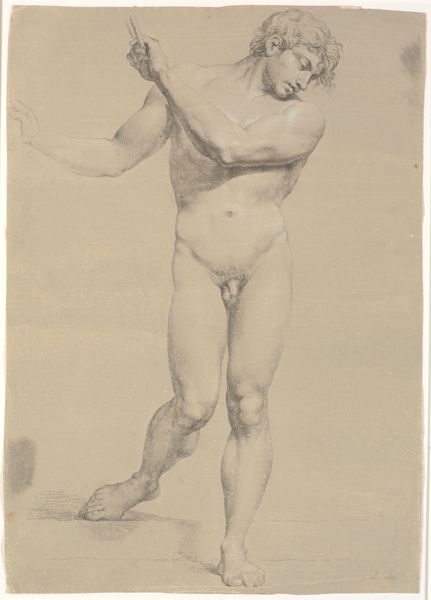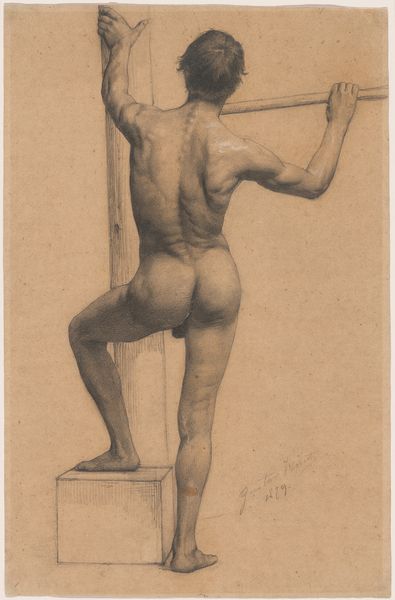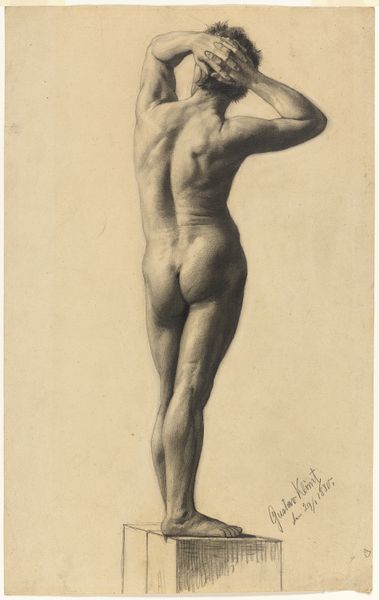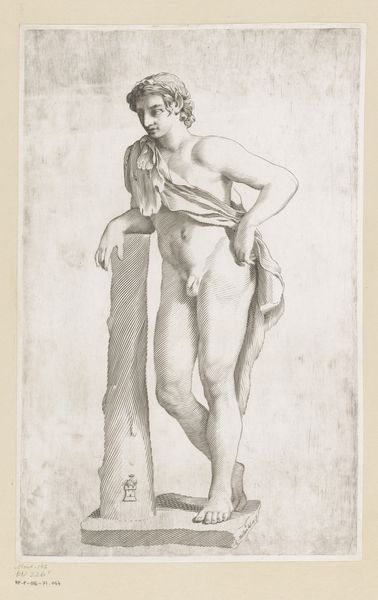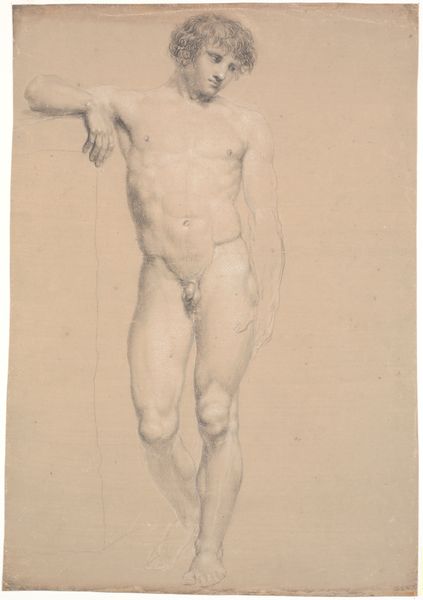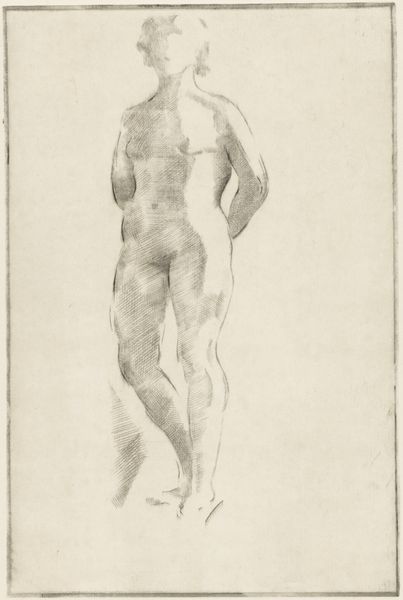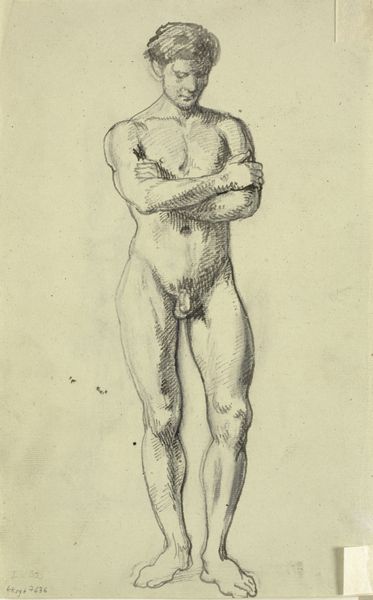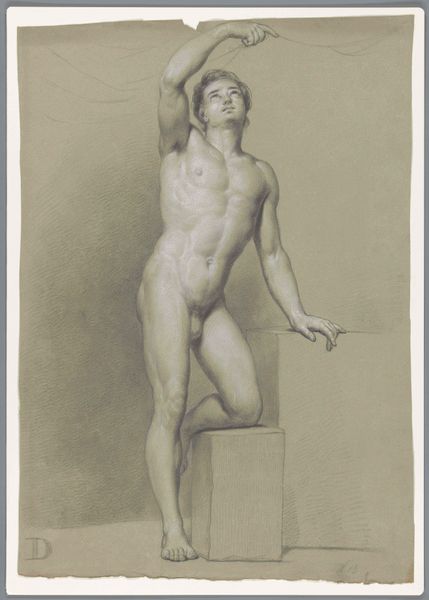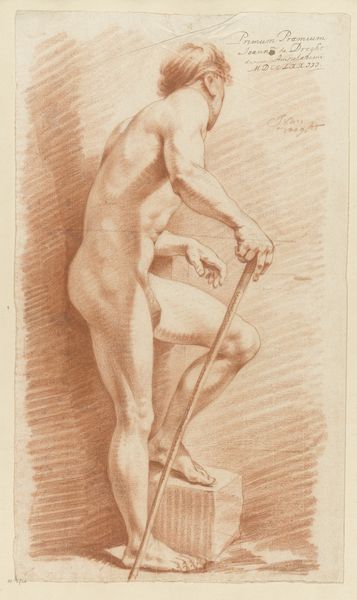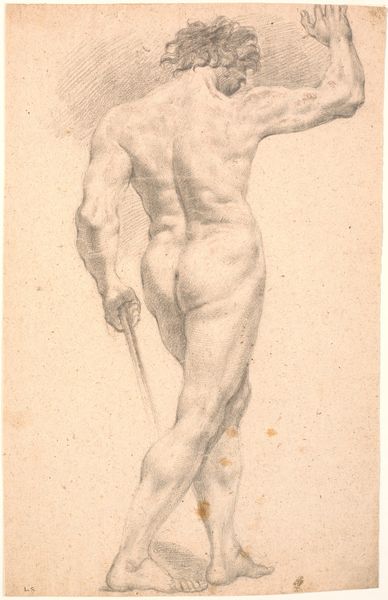
drawing, print, paper, pencil, chalk, charcoal
#
portrait
#
drawing
# print
#
classical-realism
#
charcoal drawing
#
figuration
#
paper
#
charcoal art
#
portrait reference
#
pencil
#
chalk
#
france
#
water
#
charcoal
#
academic-art
#
charcoal
#
nude
Dimensions: 636 × 485 mm
Copyright: Public Domain
Curator: As we observe this drawing, it’s worth noting that this is Georges Seurat’s "Academic Male Nude" from 1877, a charcoal drawing very much rooted in the traditions of academic art. Editor: My initial impression is one of contemplative stillness. The shading gives the figure a sculptural presence, almost like a classical statue bathed in soft light. There is an intimacy to how the body's volumes are handled. Curator: Absolutely, and that’s no accident. Seurat was rigorously trained, attending the École des Beaux-Arts. These academic studies, particularly of the male nude, were considered essential for mastering form and anatomy, adhering to long-standing classical ideals in French art. Editor: The figure's pose strikes me. He is holding a rod-like object but leans languidly against it, not with any exertion. Could it symbolize authority, perhaps subtly questioned or made human? His stance contrasts the classic heroic form that we might otherwise see in comparable works. Curator: That is astute. The prop invites several interpretations; it could simply be a studio support. These studies weren't just about anatomy. The drawings allowed future painters like Seurat to study and practice representing the human form, essential for grand historical and allegorical compositions. Editor: I'm particularly drawn to how his eyes are softly shut. It is so different from many standard works of its era, evoking introspection. Do you think this reflects a shift toward representing inner psychological states in art at this time? Curator: Indeed. Although outwardly conventional as an academic exercise, it’s a nuanced piece. Artists like Seurat would then push those traditional skills into very different directions, eventually critiquing and subverting the same academic system that trained them. Editor: I see what you mean. Looking again, it embodies transition, like one quietly suspended between the formal rules and the coming avant-garde, which perhaps heightens its evocative effect. Curator: Precisely, and what Seurat learned through this work can then be detected years later within his very pointillist paintings of modern Parisian life. Editor: Fascinating to observe how even seemingly straightforward exercises echo much broader artistic and intellectual shifts! Curator: Right, so this study gives us a peek into both the artistic foundations, but equally those upcoming transformations that define the avant-garde.
Comments
No comments
Be the first to comment and join the conversation on the ultimate creative platform.
